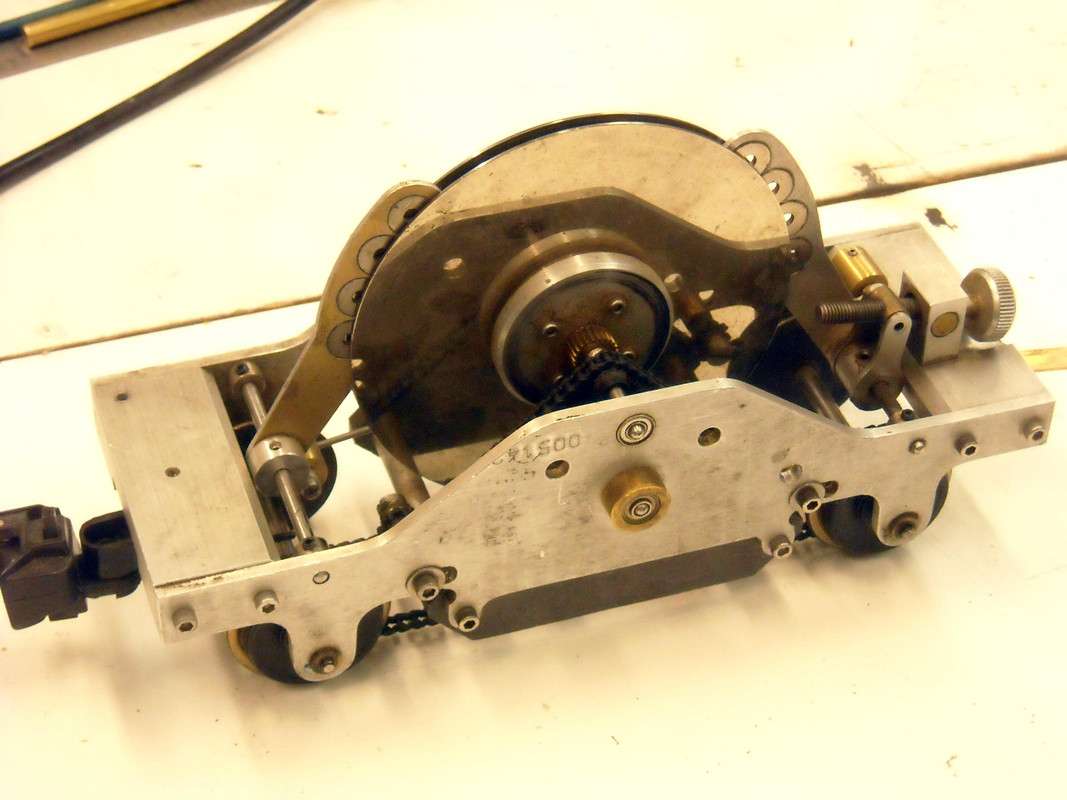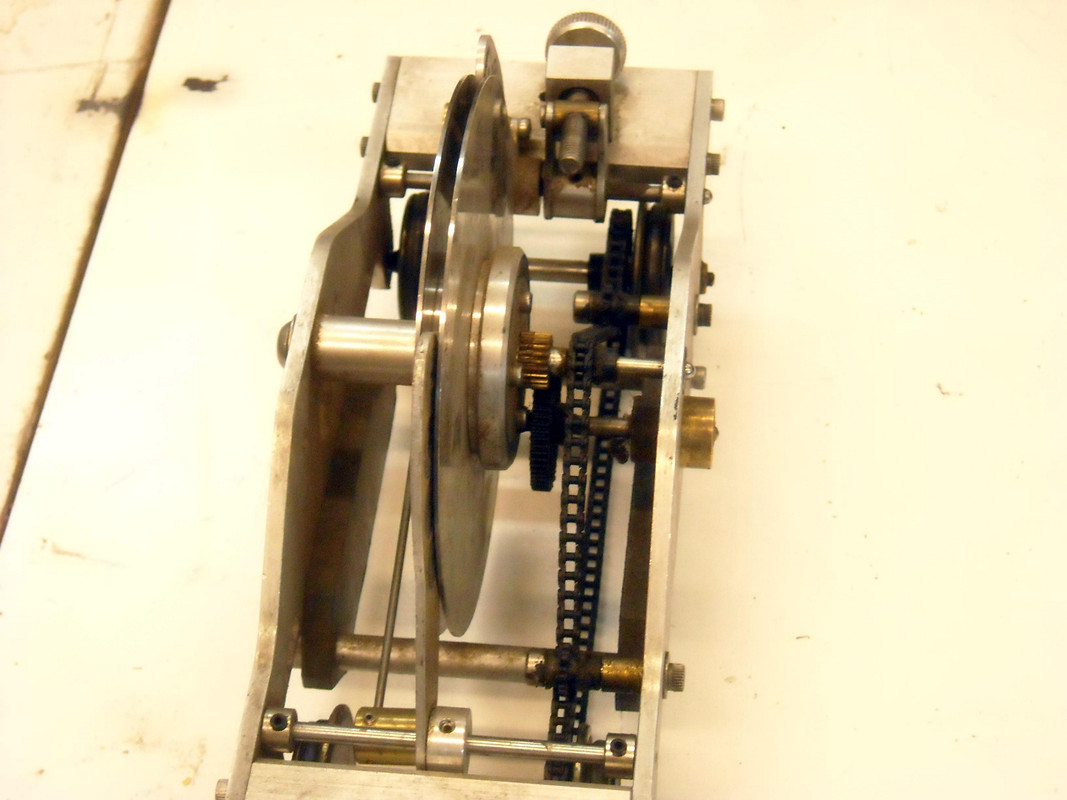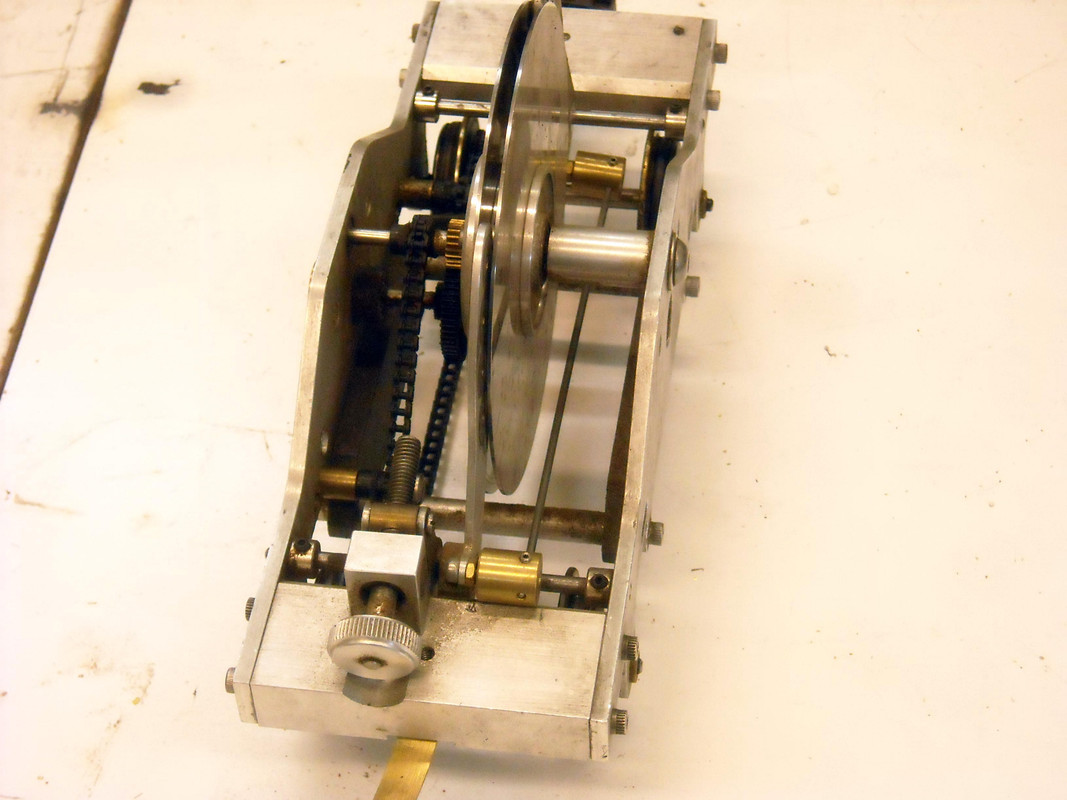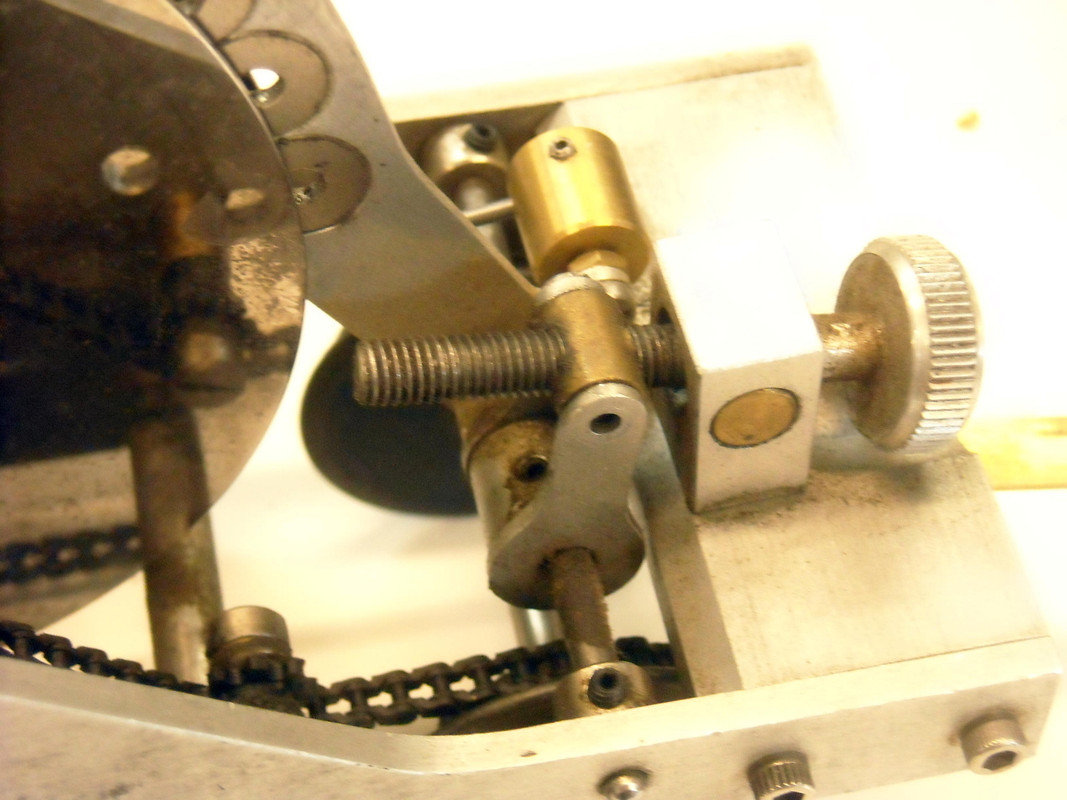This little beast turned up today, from Peter K's estate. It's essentially a flywheel car that makes a live steam loco work harder to accelerate or slow down, thus simulating the interia of a real train.
![Image]()
![Image]()
Those look like solid steel flywheels and the ends of the 'box' are solid cast iron. The thing weighs a ton - intentionally to make sure the wheels grip and it doesn't just get dragged. One flywheel was disconnected (the gear was moved on the shaft so it didn't get driven.) That may be a way of making it work with only 1/2 the inertia!
I have no idea who made it but it is a nice job. I will be taking it to Jerry's SC&M to see if (a) his track can handle the weight and (b) whether it works. I have a little english train of Thomas stuff with a 'Countess' to pull it. If it works, I'll have to find a Thomas box van to hide the internals.
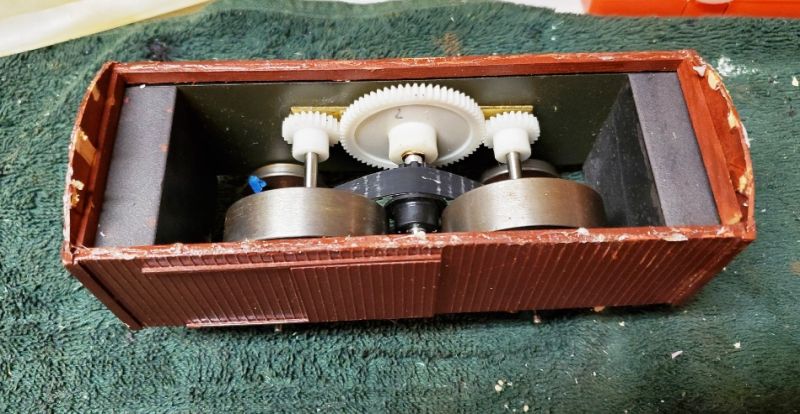
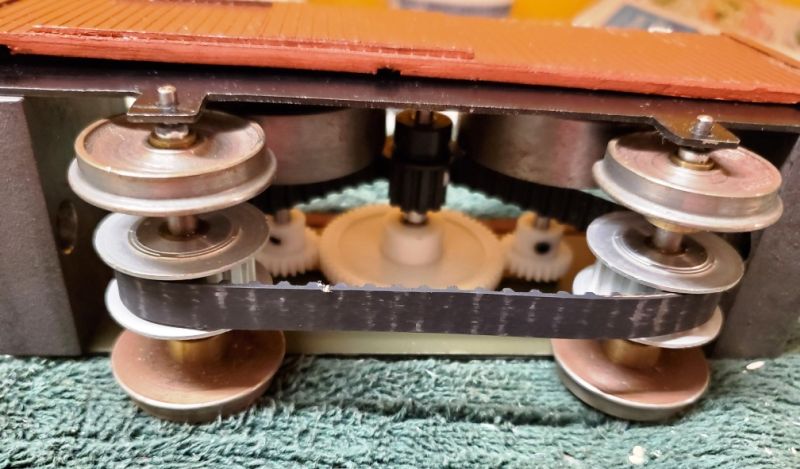
Those look like solid steel flywheels and the ends of the 'box' are solid cast iron. The thing weighs a ton - intentionally to make sure the wheels grip and it doesn't just get dragged. One flywheel was disconnected (the gear was moved on the shaft so it didn't get driven.) That may be a way of making it work with only 1/2 the inertia!
I have no idea who made it but it is a nice job. I will be taking it to Jerry's SC&M to see if (a) his track can handle the weight and (b) whether it works. I have a little english train of Thomas stuff with a 'Countess' to pull it. If it works, I'll have to find a Thomas box van to hide the internals.


